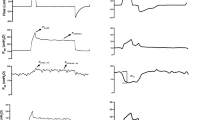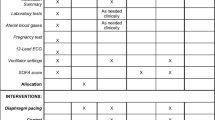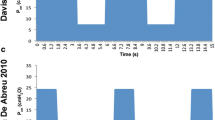Abstract
Purpose
The standard management of respiratory failure after cardiothoracic surgery involves prolonged mechanical ventilation, drug support, and chest physiotherapy. We report the effectiveness of a novel type of respiratory physiotherapy, the air mattress V-CUE unit, which utilizes a computerized automatic combination of three movements: rotation, percussion, and vibration.
Methods
Among 189 patients who underwent various cardiothoracic operations, 6 were eligible for V-CUE application, after the development of respiratory failure caused by early adult respiratory distress syndrome, massive atelectasis, or pulmonary infection.
Results
The V-CUE unit was used to treat six postsurgical patients, aged 58–73 years (mean, 65.8 years); four who had undergone coronary artery bypass grafting, one who had undergone mitral valve replacement, and one who had undergone a bilobectomy. The mean duration of supportive V-CUE was 3.9 days (range 2–6 days), and the mean duration of mechanical ventilation was 2.9 days. There was no need for reintubation or tracheotomy, and all six patients recovered uneventfully.
Conclusion
Our preliminary results indicate that V-CUE dynamic air therapy is effective for managing postoperative respiratory failure, adjuvant to or complementary to standard therapy.
Similar content being viewed by others
Author information
Authors and Affiliations
Rights and permissions
About this article
Cite this article
Bitzikas, G., Didilis, V., Mikroulis, D. et al. Air-Mattress Motion Therapy for Respiratory Failure After Cardiothoracic Surgery. Surg Today 34, 645–647 (2004). https://doi.org/10.1007/s00595-004-2788-3
Received:
Accepted:
Issue Date:
DOI: https://doi.org/10.1007/s00595-004-2788-3




